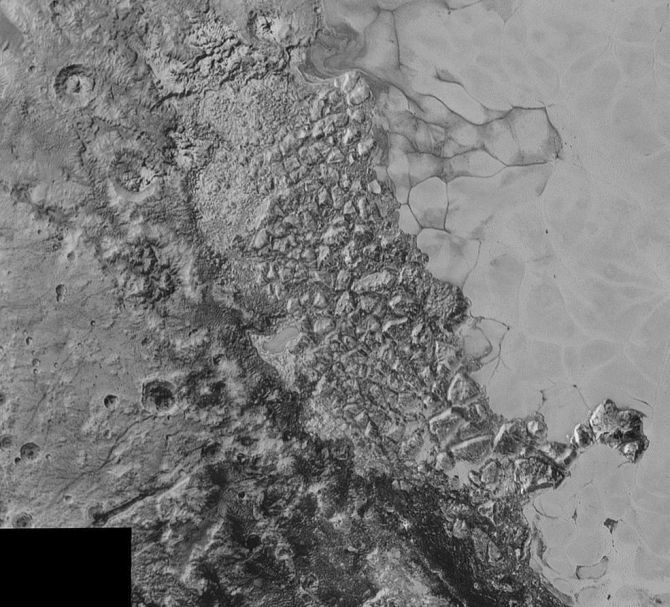NASA’s Pluto experts have revealed new high resolution close up images of the surface of Pluto -- and admit they are stunned by the planet.
They reveal a ‘bewildering variety of surface features’ that have scientists reeling because of their range and complexity.
“If an artist had painted this Pluto before our flyby, I probably would have called it over the top -- but that’s what is actually there,” said New Horizons Principal Investigator Alan Stern, of the Southwest Research Institute, Boulder, Colorado.

This synthetic perspective view of Pluto, based on the latest high-resolution images to be downlinked from NASA’s New Horizons spacecraft, shows what you would see if you were approximately 1,800 kilometres above Pluto’s equatorial area, looking northeast over the dark, cratered, informally named Cthulhu Regio toward the bright, smooth, expanse of icy plains informally called Sputnik Planum. The images were taken as New Horizons flew past Pluto on July 14, 2015, from a distance of 80,000 kilometre. Photograph: NASA/Johns Hopkins University Applied Physics Laboratory/Southwest Research Institute

Mosaic of high-resolution images of Pluto, sent back from NASA’s New Horizons spacecraft. The image is dominated by the informally-named icy plain Sputnik Planum, the smooth, bright region across the center. This image also features a tremendous variety of other landscapes surrounding Sputnik. The smallest visible features are 0.8 kilometres) in size, and the mosaic covers a region roughly 1,600 kilometres wide. Photograph: NASA/Johns Hopkins University Applied Physics Laboratory/Southwest Research Institute

In the center of this 470-kilometre wide image of Pluto from NASA’s New Horizons spacecraft is a large region of jumbled, broken terrain on the northwestern edge of the vast, icy plain informally called Sputnik Planum, to the right.

This image of Pluto’s largest moon Charon, taken by NASA’s New Horizons spacecraft 10 hours before its closest approach to Pluto on July 14, 2015 from a distance of 470,000 kilometres, is a recently downlinked, much higher quality version of a Charon image released on July 15. Charon, which is 1,200 kilometres in diameter, displays a surprisingly complex geological history, including tectonic fracturing; relatively smooth, fractured plains in the lower right; several enigmatic mountains surrounded by sunken terrain features on the right side; and heavily cratered regions in the center and upper left portion of the disk. There are also complex reflectivity patterns on Charon’s surface, including bright and dark crater rays, and the conspicuous dark north polar region at the top of the image. Photograph: NASA/Johns Hopkins University Applied Physics Laboratory/Southwest Research Institute










